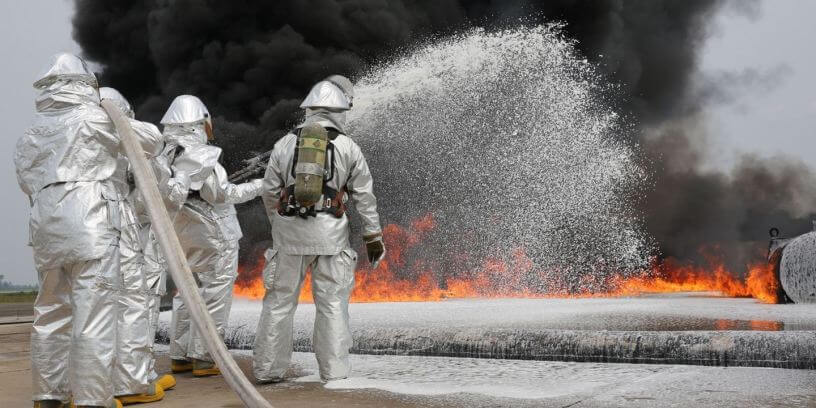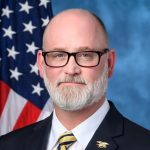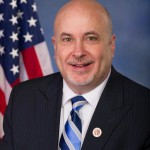State PFAS Council Releases Progress Report
State making progress on PFAS remediation, but political barriers remain.

Marines fighting fires with foam, a product that uses PFAS . Photo by Lance Cpl. Shawn Valosin/U.S. Marine Corps.
The inter-agency council of Wisconsin state government working to respond to the prevalence of cancer-causing chemicals in the state’s water released its 2022 progress report on Thursday, which shows some progress has been made but the state is still working to improve its ability to track and find sources of contamination.
The family of 5,000 chemical compounds, known as PFAS, comes from a variety of household and industrial products, including non-stick pans and foam used to fight fires at airports. Known as “forever chemicals,” PFAS don’t easily break down in nature or the human body and have been found at 30 sites across Wisconsin since 2013.
Even as state agencies have worked to institute the recommendations, additional setbacks have come up since the initial report. Earlier this year, a Waukesha County judge ruled that the Department of Natural Resources is unable to regulate PFAS under the state’s decades-old spills law, which allows the DNR to force companies to pay for pollution caused by their operation.
The state’s Natural Resources Board, which sets policy for the DNR and is run by Republican appointees who have clung to a majority with one member overstaying his term, was unable to reach a consensus on the allowable limit for certain PFAS compounds in groundwater earlier this year. Setting science-based environmental standards is the first of the council’s recommendations.
Despite the setbacks, Gov. Tony Evers celebrated the work his administration has done to institute the recommendations of the council — which he created in 2019.
This year, according to a news release, the DNR and Department of Agriculture, Trade and Consumer Protection (DATCP) will use $1 million in funding to start collecting firefighting foam that contains PFAS. That effort is expected to remove more than 25,000 gallons of the foam from more than 60 counties.
The release also touted efforts to test municipal water supplies for PFAS, which have so far sampled more than 125 water systems, 100 wastewater treatment plants and hundreds of private wells.
PFAS Council releases report on statewide progress toward clean water was originally published by the Wisconsin Examiner.
More about the PFAS Problem
- Environmental Groups, Community Advocates Push for PFAS Deal - Henry Redman - Jul 14th, 2025
- Environmental Advocates Hail Wisconsin Supreme Court Decision in Evers v Marklein - Midwest Environmental Advocates - Jul 8th, 2025
- Wisconsin Supreme Court Backs State Regulators of PFAS Pollution - Danielle Kaeding and Rich Kremer - Jun 24th, 2025
- Gov. Evers Releases Statement on Wisconsin Supreme Court Decision in WMC Inc v. DNR - Gov. Tony Evers - Jun 24th, 2025
- Rep. Shelia Stubbs Elected Great Lakes-St. Lawrence Legislative Caucus Vice Chair of the Task Force on Emerging Contaminants - State Rep. Shelia Stubbs - Jun 16th, 2025
- Legislature’s Budget Committee Unanimously Boosts Clean Water Funding By $732 Million - Danielle Kaeding - Jun 6th, 2025
- Trump Administration moves to weaken standards for toxic ‘forever chemicals’ in drinking water - Clean Wisconsin - May 14th, 2025
- Wisconsin Officials Unhappy With EPA Plan To Weaken PFAS Standards - Danielle Kaeding - May 14th, 2025
- Wisconsin Could Lose $55 Million Under Proposed EPA Budget Cuts - Danielle Kaeding - May 7th, 2025
- French Island Makes Progress on PFAS Pollution - Richelle Wilson and Trevor Hook - Mar 24th, 2025
Read more about PFAS Problem here




















